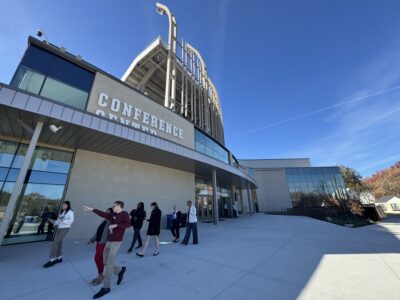2020 Census: Kansas population grows at slowest rate since Great Depression; state keeps 4 U.S. House seats

photo by: Shutterstock
Updated at 4 p.m. Monday
Kansas will get to keep all of its current seats in the U.S. House of Representatives, federal Census data confirmed on Monday, but the state still had its worst population showing since the Great Depression.
The data showed Kansas’ population grew at one of the slowest rates in the state’s history. Over the last decade Kansas added only 84,762 people. Its 2020 population stood at 2,937,880 people.
The numbers were the first the Census Bureau has released from the 2020 Census, and they are some of the most important because the figures are used to determine how the 435 seats in Congress are apportioned among the states. Population totals for individual cities or counties haven’t yet been released.
Kansas was widely expected to keep its total of four seats in the U.S. House of Representatives, and Monday’s numbers confirmed the state will maintain its current number of seats in Congress.
Texas will gain two seats in the U.S. House, while five states will each gain one seat: Colorado, Florida, Montana, North Carolina and Oregon. Seven states will lose one seat: California, Illinois, Michigan, New York, Ohio, Pennsylvania and West Virginia.
The numbers also confirmed what Kansas leaders have been seeing for the last decade: Population growth has significantly slowed in the state. Kansas’ growth rate was 2.9% for the entire decade. That’s down from a growth rate of just over 6% from 2000 to 2010. The 2.9% growth rate was the worst since 1930s, when the state was ravaged by the Great Depression and actually lost about 4% of its population.
The entire United States grew at a historically low rate as well during the last decade. The country’s total population of 331.4 million was up by 7.4% for the decade. That was the second slowest growth rate on record, the Census Bureau said, just beating the growth rate of the 1930s.
Other states in the region had mixed results on population growth. Here’s a look at the population totals and growth rates for several states near Kansas:
• Arkansas: 3.01 million people; up 3.2%
• Colorado: 5.77 million people; up 14.8%
• Iowa: 3.19 million people; up 4.5%
• Kansas: 2.93 million people; up 2.9%
• Missouri: 6.15 million people; up 2.7%
• Nebraska: 1.96 million people; up 7.4%
• Oklahoma: 3.95 million people; up 5.5%
The Census Bureau said it expects to release population totals for each U.S. House district by Sept. 30. Those numbers will be used to redraw district lines for each House seat. The U.S. Constitution requires each House district to be roughly equal in population.
Even without the loss of a congressional seat, the Republican-controlled Kansas Legislature and Democratic Gov. Laura Kelly face a contentious battle next year over adjusting political boundaries.
GOP legislators hope to redraw the 3rd Congressional District in the Kansas City area so that it’s easier for Republicans to oust the only Kansas Democrat in Congress, Rep. Sharice Davids.
The 1st District of western and central Kansas is likely to expand. Ninety of the state’s 105 counties have been losing population, while northeast Kansas has seen the most robust growth.
Legislative seats also are expected to shift from rural areas to northeast Kansas and perhaps the Wichita area.
More detailed figures will be released later this year showing population by race, Hispanic origin, gender and housing at geographic levels as small as neighborhoods. This redistricting data will be used for redrawing precise congressional and legislative districts.
— The Associated Press contributed to this report.




